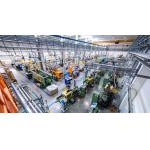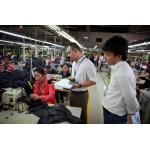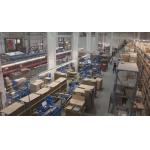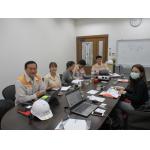Social System Standards Factory Assessment High Impartiality Justness
|
Detailed Product Description
|
Supplier Assessment FA China India Vietnam Indonesia Malaysia
What does FAT consist of? While there are standard tests that are routinely conducted, there
is no set checklist during a FAT; it can consist of a variety of
inspection points and tests per the request of the customer, based
on your requirements and unique equipment specifications. In
general, the following things are covered during a FAT: Comprehensive inspection – this is typically customized based on
the equipment and the requests of the customer but can include a
range of conformity checks and verifications (e.g. does the actual
equipment match up to the drawings and nameplate data). Contract audit – this consists of a review of the original
agreement to make sure all contractual obligations are met. Water test – this procedure simulates the system in operation to
provide proof of functionality. These tests usually include
verification of relevant documents, including user manuals,
P&IDs and any type of instructions that come with the equipment
to make sure they are accurate. It’s important to note here that there are varying levels of FAT.
They can be performed at a very basic level, such as setting up the
main pieces of the system with temporary wiring and making sure
everything moves as it is supposed to, or a more complete FAT can
be conducted where the manufacturer physically builds the whole
system in their shop to test it fully. In the latter example, the
system is then taken apart, moved to the customer’s site, and put
back together again.
Why is it important to have FAT? FATs are beneficial not just for the buyer and end-users but for
the manufacturer as well. Both parties can be assured that the
equipment meets all the contractual specifications and any issues
can be addressed before arriving at the customer’s site. Rectifying
issues while the system is still in the possession of the
manufacturer helps to keep the project on track and within budget.
FATs almost always save time and money over fixing issues in the
field. The safety of your employees is always a top concern so the quality
assurance gives you the peace of mind that all components of your
system are functioning the way they should, and within the full
range of operating specifications. Additionally, FATs help to determine who is responsible for the
problems that are identified. Sometimes the issues are the
manufacturer’s responsibility, e.g. an instrument doesn’t work
properly, and other times they are the customer’s responsibility
(for example, if a customer decides after seeing the physical
layout they want to reconfigure the design, the manufacturer can
move things around before shipping it to the site).
|
||||||||||||||||
| Product Tags: factory supervision tpi third party inspection |
Related Products
Email to this supplier







